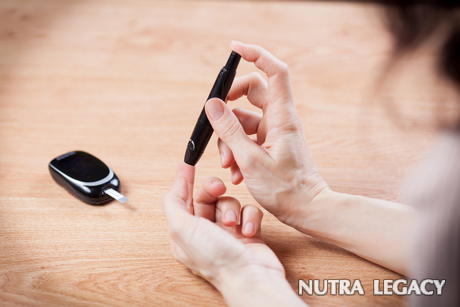Blood Sugar as One of Blurred Vision Causes

- Glucose is used by the body’s cells as an energy source and metabolic intermediate. Glucose is transported to the body from the intestines through the blood.
- Right after a meal your blood glucose level rises. About two hours after a meal, your blood glucose level decreases. If a person is affected by high blood sugar, he or she may become thirsty, hungry, experience blurred vision, frequent urination, lethargy and headache.
If we hear the term “blood sugar” we may have different ideas about it; however, this term is used in physiology where it refers to glucose in the blood. Other sugars like fructose and galactose also exist, but, as they are relatively inert, only glucose is found to be a controlling factor for metabolic regulation.
Glucose is used by the body’s cells as an energy source and metabolic intermediate. Glucose is transported to the body from the intestines through the blood. The glucose level in the human body is under control and should be maintained between 4 and 6mL. This means that the amount of glucose in the blood of an adult man should be between 3.3 and 7g.
Right after a meal your blood glucose level rises. About two hours after a meal, your blood glucose level decreases. Your blood glucose level is lowest in the morning. When the glucose levels in blood are not within a normal range, high or low blood sugar may result.
If a person is affected by high blood sugar, he or she may become thirsty, hungry, experience blurred vision, frequent urination, lethargy and headache. In emergency cases, a person may experience difficulty breathing, vomiting and increased ketones in the urine. Ketones appear in urine when the body is burning fat as energy.
Elevated blood sugar levels may be an indication of a certain problem. Two problems can result. One is such that the body’s cells become “hungry” due to a lack of glucose. The second problem is when excess glucose found in the blood causes damage to blood vessels, nerves or the eyes. If hyperglycemia (high levels of glucose in blood) remains untreated for a long time, it can bring more problems.
On the other hand, when the level of glucose in blood is too low, hypoglycemia results, also called insulin shock. There can be three reasons for this: 1) when glucose is used by the body very rapidly; 2) when it takes too long for glucose to be released into the blood stream, and 3) when the insulin level in the bloodstream is too high.
Hypoglycemia is typical for those with diabetes. Hypoglycemia can result if a person with diabetes injects too much insulin or takes too much diabetes medicine. It is also possible for this to occur when a person hasn’t eaten enough food or has increased physical activity without increasing food intake.
Vision problems are mostly associated with hyperglycemia as it directly affects the eyes. The name of this disorder is diabetic retinopathy. It may cause progressive damage to the retinas. There are two classes of diabetic retinopathy: non-proliferative and proliferative. Non-proliferative retinopathy is associated with the early stages of the disorder. Proliferative diabetic retinopathy is more severe as new vessels start growing within the eye and may bleed. In extreme cases, this can lead to blindness. Hypoglycemia could cause secondary sight problems, but it is not in direct correlation with vision issues; however, because of general fatigue and irritability, which can be caused by low blood sugar, it may cause double vision or blurred vision.
The information supplied in this article is not to be considered as medical advice and is for educational purposes only.
|
 22 Oct 2008 22 Oct 2008 |
